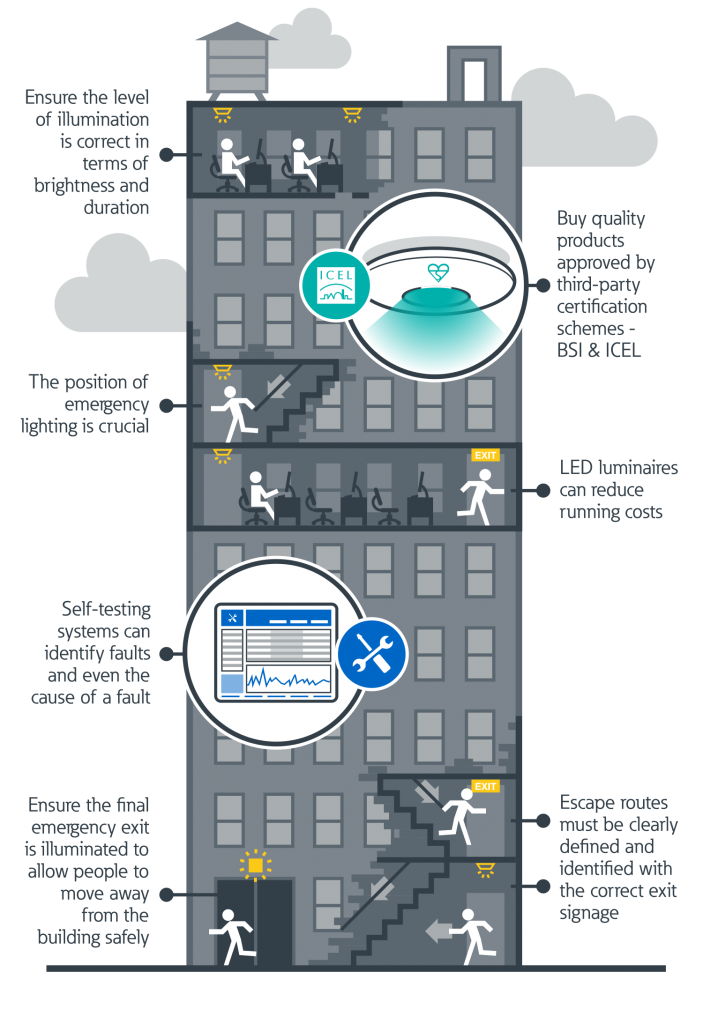
Emergency Lighting Options
A necessity in many spaces, emergency lighting has a number of requirements detailed by various regulating authorities and codes. Some of them include OSHA, the National Fire Protection Association (NFPA), the International Building Code and the International Fire Code, as well as the local authority having jurisdiction (AHJ). Grasping the regulations set by these authorities may seem challenging, but understanding the function of emergency lighting is a good start. Emergency lighting (sometimes called egress lighting) is meant to facilitate the careful and organized evacuation from a building.

As such, it is focused on making sure hallways, stairwells and exits are visible in a time of emergency. The infographic on the right from Eaton provides some key points to keep in mind. Some of the requirements as set out by NFPA state that:
- Emergency lighting must be automatically provided for at least 1.5 hours in the event of the failure of normal lighting
- It must provide illumination of at least one-foot-candle (10.8-lux) and 0.1-foot-candle (1.1-lux) measured along the path of egress at floor level
- There must be a uniformity ratio of 40:1 maintained – the maximum illumination at one point cannot be more than 40 times the minimum illumination at another point
- It must be tested monthly for at least 30 seconds and annually for an hour and a half, to simulate an emergency event
Understanding these requirements is the first step to successfully adding emergency lighting to a space. Another important piece of information to factor in is the kind of space in need of emergency lighting. Spaces requiring emergency lighting are diverse, ranging from commercial, industrial and medical facilities to religious, institutional, and public housing facilities. With this in mind, being familiar with the many options available makes it easier to fulfill emergency lighting requirements in the most effective way.
Utilitarian Options
Though the main function of emergency lighting is to provide illumination, style is a distinguishing factor among the choices available. For medical facilities or industrial spaces, choices with prominent lamp heads would be a suitably practical choice. Features such as high impact housing and water or fire resistance add to the utility of the options below.




Sleek Options
There are various low-profile emergency lighting choices for commercial facilities not wanting to disrupt the style of a space. Using streamlined, compact designs, the below options are sleek and highly functional in a time of emergency.




